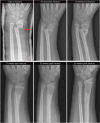Commemorating the monkey bars, catalyst of debate at the intersection of human evolutionary biology and public health
- PMID: 39282242
- PMCID: PMC11400842
- DOI: 10.1093/emph/eoae017
Commemorating the monkey bars, catalyst of debate at the intersection of human evolutionary biology and public health
Abstract
Play is an essential part of childhood, and growing attention has focused on the potential health benefits of 'risky' or 'thrill-seeking' play. Such play behavior is readily observed on any playground, where it can sometimes lead to injuries--most often from fall impacts--that require medical attention. Monkey bars account for ~7% of childhood arm fractures in the USA, an alarming statistic that raises difficult questions over its costs and benefits. Many authors view monkey bars as a public health hazard, but it is plausible that our childhood impulse toward thrill-seeking play is a result of selective pressures throughout our primate evolutionary history. Indeed, emerging evidence suggests that the developmental benefits of thrill-seeking play extend into adulthood, outweighing the occasional costs of injury. Disparate and consequential, these dueling perspectives have fueled debate among health professionals and policymakers, but with little attention to the work of biological anthropologists. Here we call attention to the hominin fossil record and play behaviors of non-human primates, providing a novel perspective that bolsters arguments for the adaptive significance of thrill-seeking play. The moment for such a review is timely, for it commemorates the centennial anniversaries of two playground icons: the jungle gym and monkey bars.
Keywords: anxiety; pediatric bone fracture; playground equipment; risky play.
© The Author(s) 2024. Published by Oxford University Press on behalf of the Foundation for Evolution, Medicine, and Public Health.
Conflict of interest statement
The authors declare no confict of interest.
Figures




Similar articles
-
Too far to fall: Exploring the relationship between playground equipment and paediatric upper limb fractures.J Paediatr Child Health. 2021 Oct;57(10):1651-1657. doi: 10.1111/jpc.15583. Epub 2021 May 25. J Paediatr Child Health. 2021. PMID: 34033695
-
The demographics of playground equipment injuries in children.J Pediatr Surg. 2008 Apr;43(4):691-9. doi: 10.1016/j.jpedsurg.2007.12.061. J Pediatr Surg. 2008. PMID: 18405717
-
Pediatric Falls: Are Monkey Bars Bad News?Cureus. 2018 Nov 5;10(11):e3548. doi: 10.7759/cureus.3548. Cureus. 2018. PMID: 30648080 Free PMC article.
-
The Minderoo-Monaco Commission on Plastics and Human Health.Ann Glob Health. 2023 Mar 21;89(1):23. doi: 10.5334/aogh.4056. eCollection 2023. Ann Glob Health. 2023. PMID: 36969097 Free PMC article. Review.
-
Don't take down the monkey bars: Rapid systematic review of playground-related injuries.Can Fam Physician. 2019 Mar;65(3):e121-e128. Can Fam Physician. 2019. PMID: 30867192 Free PMC article.
References
-
- Little H, Wyver S.. Individual differences in children’s risk perception and appraisals in outdoor play environments. Int J Early Years Educ 2010;18:297–313. DOI: 10.1080/09669760.2010.531600 - DOI
-
- Solomon SG. How to revitalize American playgrounds. In: Waller T, Ärlemalm-Hagsér E, Sandseter EBH, et al. (eds). The SAGE Handbook of Outdoor Play and Learning. London: Sage, 2017, 195–210. DOI: 10.4135/9781526402028 - DOI
Publication types
LinkOut - more resources
Full Text Sources
Miscellaneous

